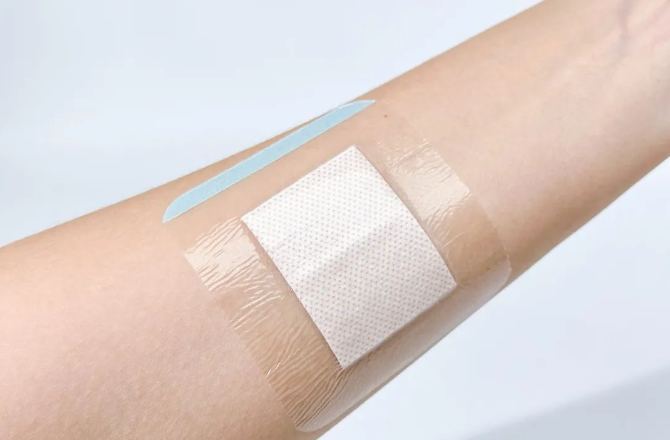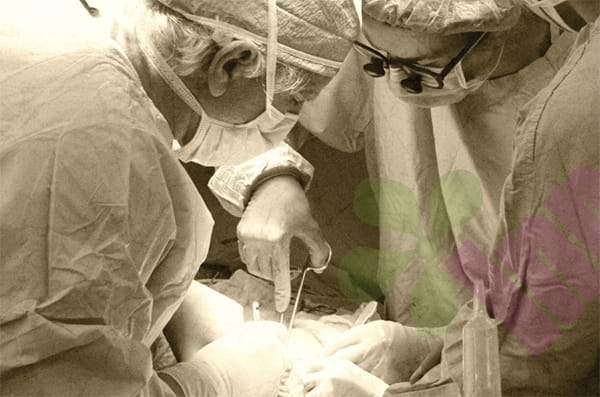Clean wounds after surgery or accidents require special care. These wounds are free of external contamination, and proper care significantly reduces the risk of infection and accelerates the healing process. Unlike contaminated wounds, the focus of clean wound care is on maintaining sterility and regular observation.

What are the typical characteristics of a clean wound?
A clean wound usually refers to a surgical incision or an uncontaminated wound. Generally, the wound edges are neat, without foreign objects embedded or dirt attached. The wound surface is a healthy pink, without abnormal secretions or necrotic tissue. The surrounding skin temperature is normal, and there are no obvious signs of inflammation such as redness, swelling, heat, or pain. This type of wound is usually caused by a sharp object, such as a scalpel, a clean glass, or a knife. The risk of infection of a clean wound is relatively low, but it still requires standardized care because any wound has the possibility of bacterial colonization, but the number is not enough to cause infection.
How to properly disinfect wounds and change dressings?
The choice of disinfectant should be made with caution. Iodine tincture is a common and safe choice with a suitable concentration of 0.5%, which can effectively kill bacteria without over-stimulating the tissue. When disinfecting, wipe in a circular motion from the center of the wound to the periphery to avoid contamination caused by smearing back and forth. The frequency of dressing changes depends on the condition of the wound. Usually, the first change is made 24-48 hours after surgery, and then every 2-3 days. The specific changes should be made according to the doctor's instructions. Wash your hands thoroughly before changing the dressing and use sterile gloves and instruments. The choice of dressing should take into account the characteristics of the wound. In the early postoperative period, a gauze dressing with good breathability can be used, and in the later period, a hydrocolloid dressing can be used to promote healing. Be gentle during the operation to avoid pulling on the wound and causing damage.
What details should we pay attention to in daily care?
It is very important to keep the skin around the wound clean and dry. When bathing, you can use waterproof dressings to protect the wound to avoid direct soaking. If the dressing is soaked or contaminated by water, it should be changed in time. Choose loose, breathable cotton materials for clothing to reduce friction and irritation. Avoid strenuous exercise or movements that may pull the wound, especially after chest and abdominal surgery, to avoid sudden force. Maintain a balanced diet and consume enough protein and vitamin C to promote collagen synthesis. Pay attention to rest and ensure adequate sleep, which helps the immune system function. Do not touch the wound with your hands, and resist the urge to scratch even if you feel itchy. Observe changes in body temperature. Unexplained fever may be an early sign of wound infection.
How to determine if a clean wound is infected?
Close observation of changes in the wound is the only way to detect infection. Under normal circumstances, the wound should heal gradually, the redness and swelling will not expand, and the pain will gradually subside. The following situations may indicate infection: sudden increase in wound pain, especially throbbing pain; the redness and swelling extend more than 2 cm beyond the edge of the wound; yellow or green purulent secretions appear; the wound emits an odor; the surrounding skin temperature rises; accompanied by systemic symptoms such as fever and chills. These changes usually occur within 3-7 days after surgery. Once these danger signals are found, you should seek medical attention immediately and may need antibiotic treatment. People with diabetes and those with weakened immune systems need to be more vigilant because they may have atypical symptoms of infection but more serious consequences.
When do you need to seek professional medical help?
Although clean wounds have a lower risk of infection, professional treatment is still required in the following situations. The wound dehisces or the sutures become loose, especially when there is tissue exposure. The bleeding continues and cannot be stopped by pressing for 15 minutes. The severe pain cannot be relieved by conventional analgesics. The above signs of infection appear. The general condition worsens, such as high fever, altered consciousness, etc. The wound does not heal for a long time, exceeding the expected healing time. These situations may require a doctor to re-evaluate, perform wound culture, adjust sutures, or change the treatment plan. Remember not to use antibiotic ointments on your own, as improper use may cause drug-resistant bacterial infection.
Clean wound care may seem simple, but every detail impacts the quality of ultimate healing. From the first dressing change to complete healing, standardized procedures and patient observation are required. It's essential to always have basic wound care supplies at home, such as functional wound dressings, saline solution, and iodine disinfectant. For more information on Innomed® Silver Ion Dressing Textile Fiber, refer to the previous article. If you have customized needs, please contact us; we will wholeheartedly. At longterm medical, we transform this data by innovating and developing products that make life easier for those who need loving care.
Editor: kiki Jia

 English
English عربى
عربى Español
Español русский
русский 中文简体
中文简体








